Evidence That an Israeli Jet Dropped an AirBurst Bomb on the al-Ahli Hospital Courtyard
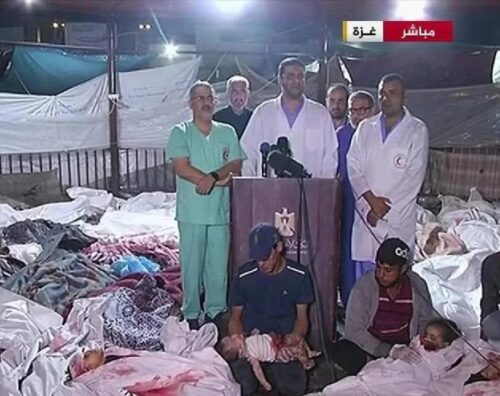
It’s true that Israel didn’t “bomb the al-Ahli hospital” in Gaza on the night of Oct. 17th 2023. The evidence suggests it did something much worse.
As is the case with all other hospitals in Gaza, al-Ahli hospital had become a refuge for the thousands of people internally displaced in Gaza due to Israel’s massive bombing campaign that began on Oct. 7th. On the night of Oct. 17th, hundreds of Palestinian men, women and children had congregated in the courtyard of the hospital (the hospital itself being already full) because they believed it to be a relatively safe haven from Israeli bombs.
Canon Richard Sewell, the dean of St George’s College in Jerusalem, told the BBC that about 1,000 displaced people were sheltering in the courtyard when it was hit, and about 600 patients and staff were inside the building.
Not only had the IDF already warned this hospital in the three consecutive days before the explosion that it would be attacked, they actually attacked it on Oct. 14th, hitting the cancer ward. Since Oct. 7th, the WHO has reported 59 attacks on healthcare establishments in Gaza City and 137 across the entire territory of the GazaStrip.
Note also that, in the past week, Israeli political and military elite have publicly stated that they view all Palestinian resistance groups as “literal Nazis” and by implication the Palestinian people as “Nazi sympathizers”, and therefore “subhuman” and not entitled to the same rights as “normal” human beings.
Initially, and based on claims by Hamas, Palestinian Islamic Jihad (PIJ) and hospital staff, the media reported that Israel had bombed the hospital, “killing hundreds of people.” Within a day however, the IDF claimed that the explosion was in fact a result of a PIJ rocket that “misfired” and hit the area, and provided evidence to “prove” it.
Since then, both the UK’s Channel 4 and Al Jazeera (video below) have convincingly debunked this IDF claim, showing that the PIJ rocket in question was fully destroyed by the Iron Dome missile defense system about 7 seconds before the explosion at the hospital, and therefore could not have been responsible for the damage to the courtyard and the deaths of 471 people.
https://www.sott.net/embed/PrW6bouPHyIMeDpe1xFraKhW5TV
There is also video evidence of the sound of a jet in the air about 2 seconds before the explosion at the hospital.
The Photo Evidence
Below is an image of the crater in the courtyard left by the missile/bomb.
Note the small size of the crater and also the likely direction of the missile/bomb (from the East/North East) based on the scarring pattern to the right of the crater (Westwards). The official Israeli narrative on this event is further discredited by their claim that the “failed PIJ rocket” came from almost the opposite direction, the South West. See here for a forensic analysis suggesting the missile/bomb came from the North East.
The IDF and others had also claimed that it could not have been an Israeli missile/bomb because they leave much bigger craters. Such a ‘hot take’ however, ignores the fact that there are many different types of bombs in the Israeli arsenal. And some of them have specific purposes that mean they do NOT leave a large crater (more on that in moment).
Next look at these images of the cars that were parked within 5-10 meters of the crater. Note that several of the roofs of the cars are caved in by significant downward pressure. Notice also the damage to the tile roof in the background that appears to have been “ablated” from above rather than from below.
The next image shows tile roofs of buildings situated to the right (West) of the impact crater and the burned cars. The height of the roof of the large building is approximately 8-10 meters. The damage appears to be consistent with the impact of objects moving in a horizontal/downward direction rather than up and outward blast debris from a ground impact that would have caused more damage to the building facade than the roof. In addition, given the small size of the crater, it is unlikely that there was enough ‘ejecta’ to cause this widespread damage while also killing hundreds of people.
The image below shows significant shrapnel (or projectile) damage to the East of the crater site also, suggesting a 300-degree dispersal.
Below is an overview of the site, with my additions showing the estimated diameter of the immediate blast area or “kill zone”, which is about 40-50 meters. Remember, there is no dispute that upwards of 1,000 people were packed into this area on the night of the explosion.
The various Palestinian resistance groups have rockets at their disposal that carry warheads ranging in size from 5kg to 20kg.
Here’s an example of 20kgs of explosive 5 meters from the detonation site.
While a standard Palestinian rocket hitting the ground could plausibly have caused the crater and at least some of the shrapnel damage to cars and buildings seen at the site, it is unlikely that it could also have killed 471 people, regardless of how tightly packed together they were, simply because it lacks the explosive power and shrapnel volume to do so.
The Most Likely Explanation
Given the extent of Israel’s ongoing surveillance of Gaza, the fact that up to 1,000 people had congregated at that location was very likely known to the IDF command. Certainly, such a large group of people would have been clearly visible to the pilot of a jet that dropped the bomb/missile via his FLIR imaging sensor.
Bombs with airburst setting detonate at a pre-set height above the ground, dispersing either shrapnel or cluster munitions over a wide area. They are designed to be used against “soft targets,” i.e. people, rather than buildings. Most of the explosive energy of the bomb does not impact the ground but disperses in the air with the shrapnel.
The video below shows the effects of a US-made mark 83 airbust bomb, and subsequently GMLRS missiles with a M30A1 warhead with airburst fuze, detonating at 10 meters above the ground. Notice how a small part of the explosive energy and probably the tail fin of the missile assembly continues through to the ground, while the large majority of the explosive energy (along with the rest of the missile body and any added cluster munition) is dispersed over a downward circular pattern. The impact on the ground directly in line with the angle of the bomb/missile would be minimal, mirroring the small crater at the hospital courtyard.
In the comparison below between two bombs (one a mark 83 JDAM configuration bomb from Afghanistan, the other from the attack on the al-Ahli hospital), while the sound is the same, the first ejects a large plume of debris into the air because it exploded on impact with the ground. In the 2nd clip from the hospital attack, there is no such plume visible (and no large crater) because it was most likely an airburst bomb, the explosive force and shrapnel from which was absorbed, partly by the cars and buildings in the courtyard, but primarily by the bodies of the hundreds of people who had congregated there.
The most likely explanation then is that an Israeli Air force jet deliberately fired a US-madeMark 83bombwith JDAM guidance kitandairburst fuze settingon the courtyard of the hospital where up to 1,000 Palestinians were seeking refuge – ironically, from Israeli bombs. The intent was not to target the hospital itself because in that case an airburst bomb would not have been used and the hospital itself would have been hit. In the case of ‘bad aim’, the crater in the courtyard would be much larger.
The likely intent, instead, was to target the 1,000 people in the courtyard with a bomb that was specifically designed to kill as many ‘soft’ targets as possible.
The only unusual aspect of this event was the efforts made by the Israeli government and military to deny responsibility. After all, Israel has, to date, had no problem in destroying entire buildings in Gaza with many people inside. Why would they make an exception for the al-Ahli massacre? Was it the unusually large number of civilian deaths, and that they were deliberately targeted? Or was it the fact that the ‘optics’ of such a bloody massacre using an American plane and an American bomb were particularly bad given that Biden was arriving the very next day? And was it the Biden administration that pushed the Israelis to mount a media offensive, not to apologize, but to deny that they (and therefore the Americans) had anything to do with it?
I suppose we’ll never know the finer details. But given the available facts and the overall context in which the massacre occurred, there is little doubt that the massacre at the al-Ahli hospital courtyard has Israeli fingerprints all over it.
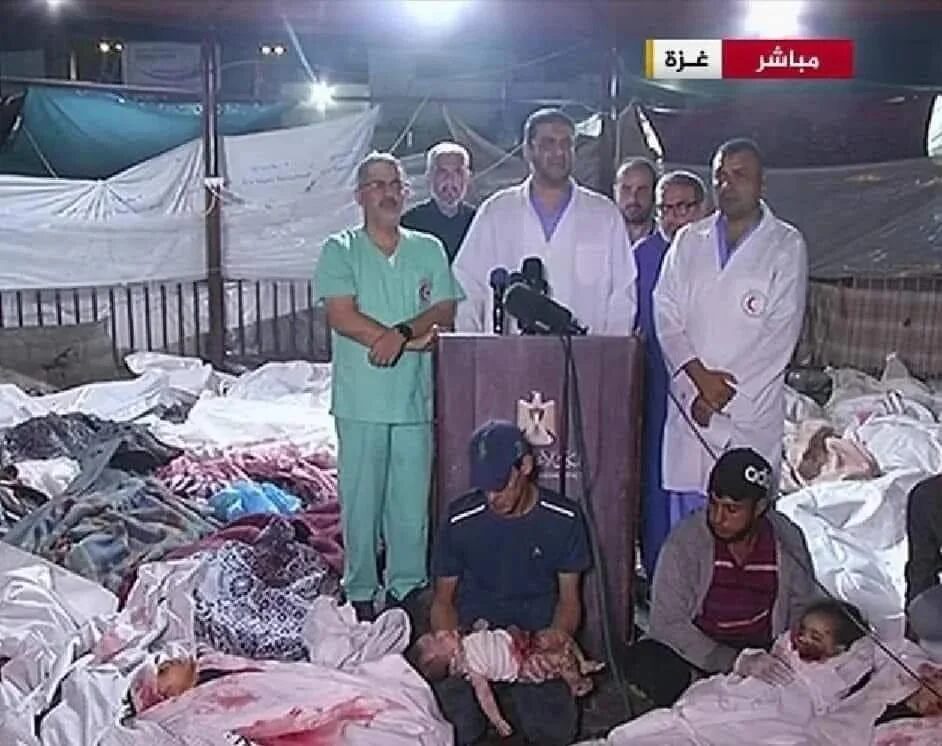
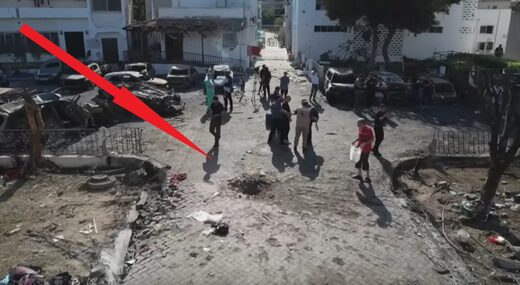
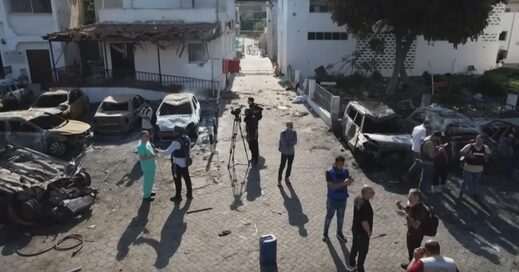
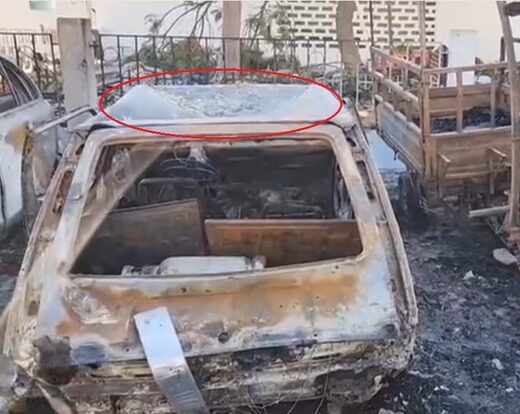
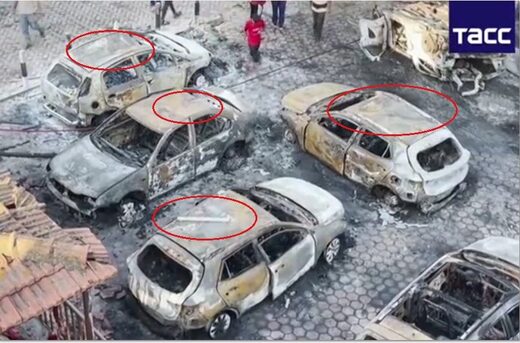
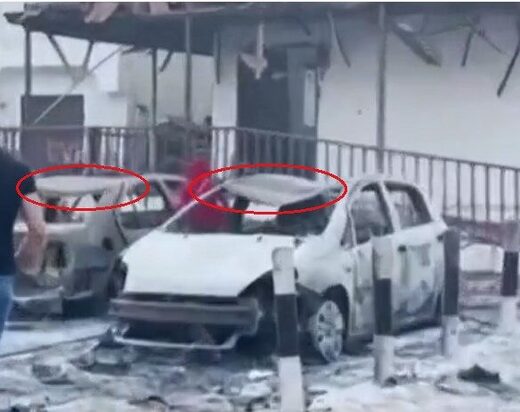
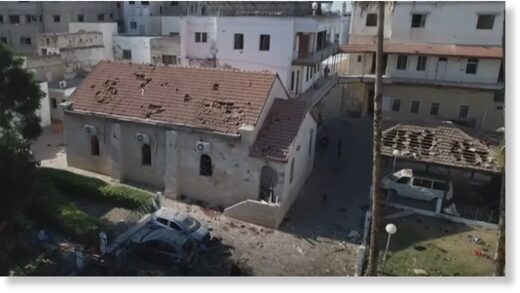
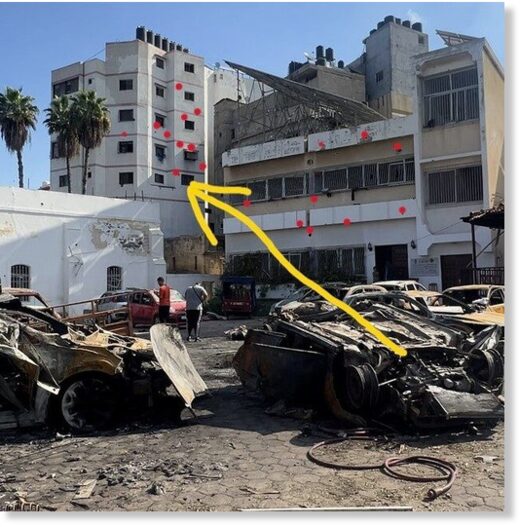
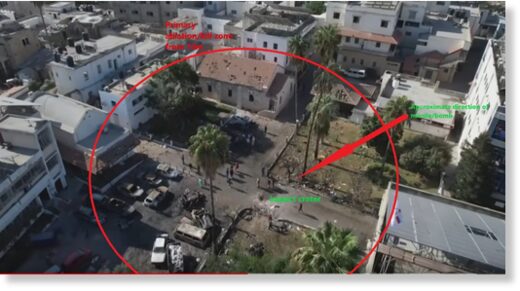
1 thought on “Evidence That an Israeli Jet Dropped an AirBurst Bomb on the al-Ahli Hospital Courtyard”